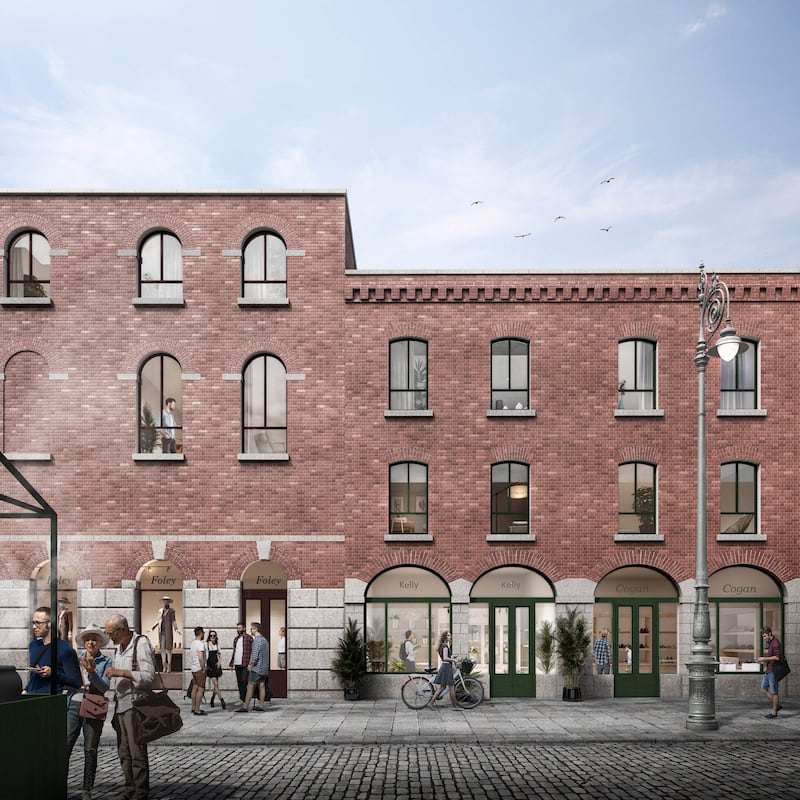A group set up by the Government to advise on the future of Moore Street in Dublin and its 1916 national monument has split over rival proposals for the area.
Some relatives of the 1916 rebels and Sinn Féin have backed a body called the Moore Street Preservation Trust, which received $10,000 from the Ancient Order of Hibernians in the US to fund an architectural plan for the area that embraces property it does not own.
But the trust's structure and its plan have been questioned by others involved in the Moore Street Advisory Group, which was tasked by the Government with finding "a way forward" on regenerating the area.
Chaired by academic Tom Collins, the advisory group includes local and Oireachtas representatives for various parties, 1916 relatives, street traders and other stakeholders. "There was a lot of concern and unease about it," said one participant, referring to the trust. "The legal status is not clear to me."
The advisory group is scheduled to meet this week to sign off on a report for Minister of State for Heritage Malcolm Noonan that must reflect the area's link to the Easter Rising and recognise its street trading culture.
But participants said there was no prospect of the group agreeing on an architectural plan. “I don’t think we’ll get consensus to be honest,” said one, echoing views expressed by others.
State-owned buildings at 14-17 Moore Street are designated national monuments under a 1930 law, meaning their preservation is deemed a matter of national importance. The street was where the 1916 leaders met for the final time after the Rising and decided to surrender.
The trust, chaired by Sinn Féin councillor and former Dublin lord mayor Mícheál MacDonncha, is against proposals for the area by UK property company Hammerson. That firm owns a six-acre site between Moore Street, O'Connell Street and Parnell Street.
But little is known about the trust's legal structure. James Connolly Heron, great-grandson of 1916 leader James Connolly and a trust director, said there had been a delay in formally registering the body because of coronavirus disruption.
“It’s with the accountants as far as I know,” he said.

Other trust directors include Rosa Mylonas, great grand-niece of 1916 proclamation signatory Seán MacDiarmada and journalist and historian Tim Pat Coogan.
Mr Connolly Heron and Mr MacDonncha said the trust was not part of Sinn Féin. Mr Connolly Heron said: “The trust emerged out of the [Save Moore Street] campaign. It’s entirely independent, as is the campaign.”
Mr MacDonncha said: “The trust is there to present an alternative plan and campaign for it.” Asked whether the trust’s plan would necessitate compulsory purchase orders to acquire Hammerson property, he replied that was “one option.” The other option was that Hammerson “takes on board” the trust’s proposal, he said.
President of the Ancient Order of Hibernians Danny O’Connellsaid the organisation was non-partisan and non-party political. Its funding for the trust arose from working for years with Mr Connolly Heron to support his campaign to preserve Moore Street.
He told The Irish Times that the Ancient Order of Hibernians (AOH), which describes itself as an Irish Catholic fraternal organisation, received nothing in return for the donation. “Was there any commitment to us? None whatsoever.”
‘State-sponsored vandalism’
Similarly, Mr Connolly Heron said the AOH was “not getting anything from us in return” for its money. “As far as I know they would like to see the American connection [with the independence struggle] marked by way of a memorial. Just to be clear, they never asked us that.”
Despite giving money to the trust, Mr O’Connell said he did not favour the proposal for the street over Hammeron’s. “I don’t know enough about the current plan to make a comment on it.”
Hammerson has said it will soon submit a planning application to Dublin City Council for a "sensitive regeneration" of a "long-neglected" part of the city. "The development will be delivered in a respectful and historically-sensitive manner . . . while retaining the long-standing market tradition and heritage of the area," said Hammerson.
The company’s plan has won over some participants in the advisory group. “Hammerson have taken on board a huge amount of the historical concerns that were brought to their attention,” said a member.
The trust’s plan was presented to the advisory group by Sinn Féin TD Aengus Ó Snodaigh. Last week, Mr Ó Snodaigh said State bodies “could negotiate the purchase or part-exchange of the additional properties” from Hammerson to deliver an alternative.
“A developer-led project for this historic site will be viewed by future generations as an unforgivable and wanton act of State-sponsored vandalism,” he said.






